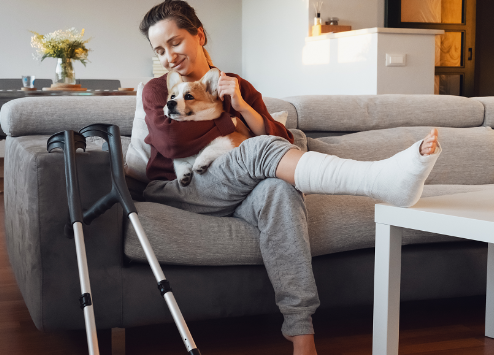Health
How to Adjust to Crutches: 9 Steps

If you’ve recently suffered an injury or had surgery that requires the use of crutches, transitioning to this new form of mobility can be challenging. In this article, we will outline nine steps to help you adjust to using crutches and make your recovery process smoother.
Just remember,education is the doorway to happiness. To receive a good education, you will need good teachers. Also, you will need to be up on the latest tech.
- Get the right crutches: It is important to choose crutches that are the appropriate height and style for you. There are different types of crutches available, including forearm and underarm varieties. Consult your healthcare professional for recommendations on which type suits your needs best.
- Adjust the height: Ensuring proper height balance is crucial for maintaining stability and avoiding undue strain on your body. Your elbow should bend at a 15-30 degree angle while holding the crutch handles, and the top of the crutch should rest a few inches below your armpit.
- Familiarize yourself with weight distribution: When standing on your unaffected leg, practice transferring your weight from one leg to the crutches. Focus on keeping your upper body straight and balanced as you lean forward slightly.
- Learn the proper technique for walking: Start with putting both crutches slightly ahead of you; then, step forward with your unaffected leg while keeping weight on the crutches. Swing both crutches forward as you lift your affected leg and continue alternating this pattern as you walk.
- Take small, slow steps: Initially taking small, slow steps will reduce fatigue and prevent falls as you learn to maneuver safely with crutches.
- Practice sitting and standing: When sitting down, secure both crutch handles in one hand while holding onto a stable surface with the other hand. Use both legs and arms for support when lowering yourself onto a chair. When standing up, reverse this process by pushing off from the supportive surface with both arms and standing on your unaffected leg.
- Strengthen muscles: An injury that requires crutches can also lead to muscle atrophy. Engage in regular rehabilitation exercises or physical therapy under the guidance of a healthcare professional to help improve muscle strength and flexibility.
- Use appropriate footwear: Always wear stable, non-slip footwear while using crutches to provide additional support and diminish the risk of falls.
- Take care of your body: In addition to strengthening muscles, it is important to maintain proper posture and pay attention to any discomfort in your hands, shoulders, underarms, or feet. If discomfort persists, consult your healthcare professional for advice on changes to your crutch use or adjusting their height.
Read Also: Sculpting Your Jawline
By following these nine steps, you will be well on your way to safely and efficiently adjusting to life with crutches. Remember that patience and practice are essential during this time – give yourself room for growth and learning as you navigate the challenges of crutch use.





